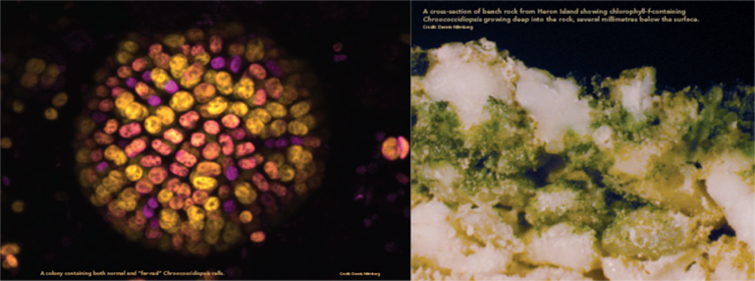The Photosystems of Chroococcidiopsis thermalis (co-supervisor Dr. Robin Purchase)
With the increasing threat of climate change, understanding how photosynthetic organisms adapt to extreme conditions is a key field of research. We have two projects that relate to C. thermalis.
Groups
Research themes
Project status
Content navigation
About
The hardy cyanobacterium C. thermalis became famous for surviving the desiccation and radiation experienced on the outside of the international space station. It can also grow under a wide range of temperatures and light conditions. With the increasing threat of climate change, understanding how photosynthetic organisms adapt to extreme conditions is a key field of research. We have two projects that relate to C. thermalis.
Project 1 focuses on photosystem II (PSII) of C. thermalis. PSII is the key enzyme enabling the oxidation of water. We have found that PSII in C. thermalis has some very unexpected characteristics. This project involves a more detailed optical survey and analysis of this protein complex so as to understand its function. The results can be modelled using a simple, well-established exciton model.
Project 2 looks at Photosystem I (PSI), which uses light energy to catalyse the transfer of electrons across the photosynthetic membrane. These electrons are ultimately used to produce the energy carrier NADPH. This project aims to characterise how PSI from C. thermalis responds to far-red light and answer current questions as to how chlorophyll f is involved in the key photochemical steps.

